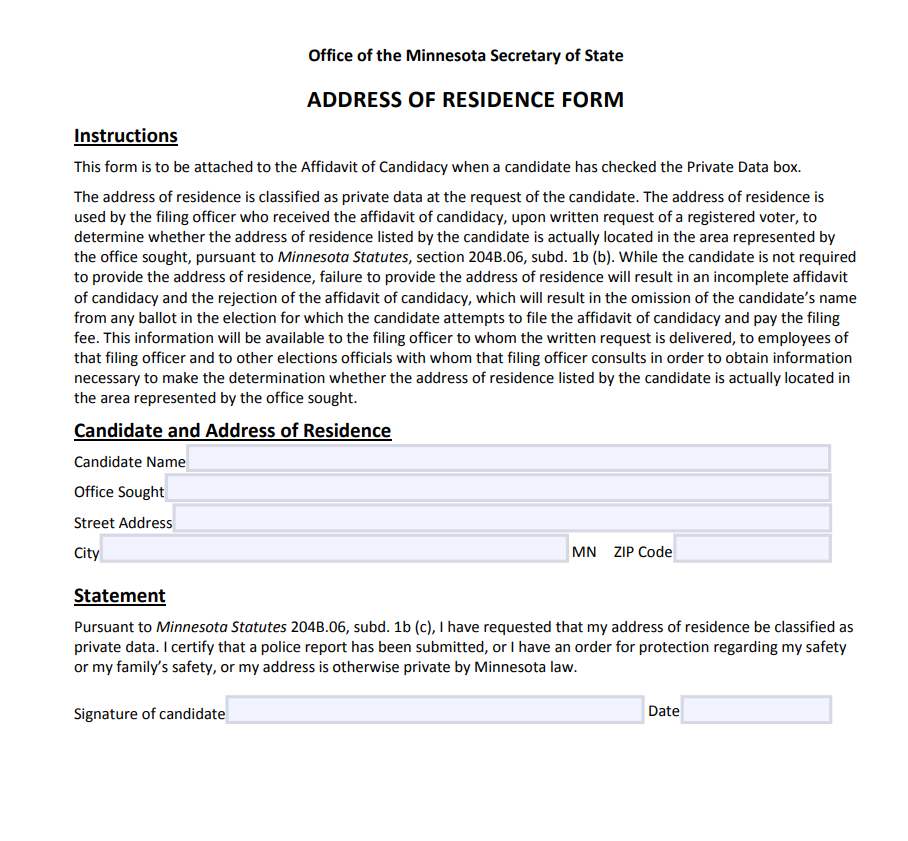Minnesota Residency Affidavit Form – A Minnesota Residency Affidavit Form can be used for a number of things, including demonstrating your Minnesota residency for immigration purposes. Additionally, it can be used to prove citizenship or immigration status, register your child for public school, or even obtain a notarized affidavit of residency. Why then would you require one? To find out more about its most crucial features, continue reading.
A sworn declaration that a certain person resides at a particular address is known as a proof of residency letter.
The affidavit of residence is a sworn declaration that specifies a particular person’s Minnesota dwelling address. It is used for a variety of things, including applications for a driver’s license, college in-state tuition rates, and school registration. Use the address that is allotted for you if you have more than one place to live.
Many landlords request renters to sign papers confirming their residency as proof of residency. The paperwork can be used for a variety of things, such as amending your voter registration, setting up utility bills, and changing your address on your driver’s license. A lease agreement or a letter from your landlord can be useful when you need to demonstrate residency.
A landlord, a roommate, or an attorney can all provide a letter as verification of residency. It can be signed in front of a notary public and utilized for in-state tuition or educational expenses. This document has a wide range of applications, although it is typically used to demonstrate residency. It might also be necessary for immigration reasons.
It is utilized to enroll children in public schools.
In Minnesota, there are two ways to sign up a child for public education. There are two methods for selecting a school: open enrollment and lottery enrollment. Students can enroll in schools outside of their district through open enrollment. For the 2020–21 academic year, more than 86,000 students will be openly enrolled in Minnesota. Through a lottery system, parents can petition for open enrollment for their children, who may then attend the nonresident district until they graduate from high school. When applying for open enrollment, siblings of open-enrolled students will be given preference.
It is employed to demonstrate immigration status or nationality.
In Minnesota, a Certificate of Arrival is a legal document that can be used to demonstrate immigration status or citizenship. A document specifying the date, method, and location of entry was necessary for immigrants in the United States prior to 1906. Along with the petition for lawful permanent residence, this paper was submitted. An immigrant was obliged to have a certificate of registry as of July 1, 1924. After July 1, the INS stopped issuing these documents, however a valid certificate of arrival still enables one to demonstrate immigration status.
To obtain a notarized affidavit of residency, use this method.
An affidavit of residency serves as proof of a person’s domicile in a certain state. It is frequently utilized for a number of things, such as applications for drivers licenses, college in-state tuition rates, and school registration. When you don’t have other residency documentation, such a marriage license, getting a notarized copy of your affidavit is an excellent option.
You will need to present evidence of your Minnesota residency in order to be granted legal admittance in the instance of authorized short-term admission. For this purpose, you cannot utilize residency documents from another state or jurisdiction. It’s simple to obtain a notarized affidavit of residency, but you should be aware of the requirements. To get one, follow these steps:
Download Minnesota Residency Affidavit Form 2022
